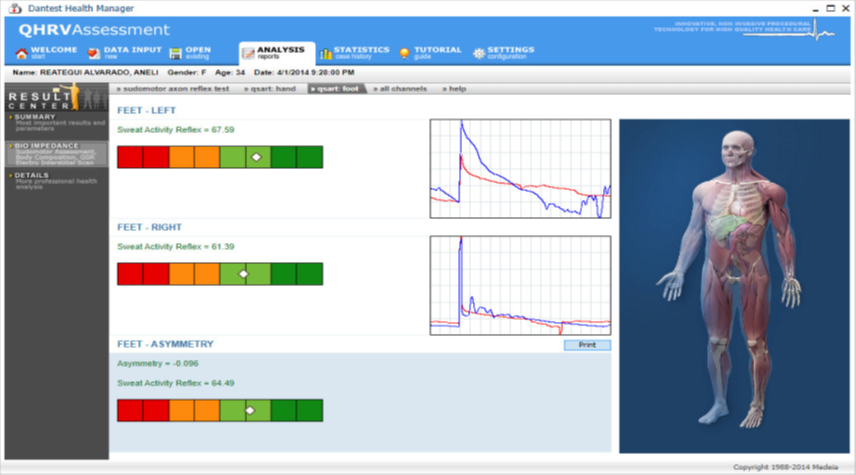QSART Testing: Essential for Autonomic Neuropathy Diagnosis
What is QSART:
Quantitative Sudomotor Axon Reflex Test (QSART) is a test to evaluate the integrity of the postganglionic sudomotor system along the axon reflex to define the distribution of sweat loss. This is accomplished by the release of acetylcholine into the skin which activates receptors on the eccrine sweat gland. The sweat response is recorded from four sites (forearm and 3 lower extremities sites) and assessed for deficits.
What does it measure:
The QSART is a test that measures the autonomic nerves that control sweating. The test is useful in assessing autonomic nervous system disorders, peripheral neuropathies and some types of pain disorders. The test requires a mild electrical stimulation on the skin called iontophoresis, which allows acetylcholine, a naturally occurring chemical, to stimulate sweat glands. The QSART measures the volume of sweat produced by this stimulation.
QSART is used to diagnose:
- Painful, small fiber neuropathy when nerve conduction test results are normal
- Disturbances of the autonomic nervous system, which controls the sweat glands, heart,
- digestive system, other organs, and blood pressure
- Complex pain disorders
- Diabetic neuropathies
- Enzyme disorders
- RSD (Reflex Sympathetic Dystrophy, Complex Regional Pain Syndrome)
- Dysautonomia
- Multiple System Atrophy (Shy-Drager syndrome)

More info

Aetna Clinical Policy



